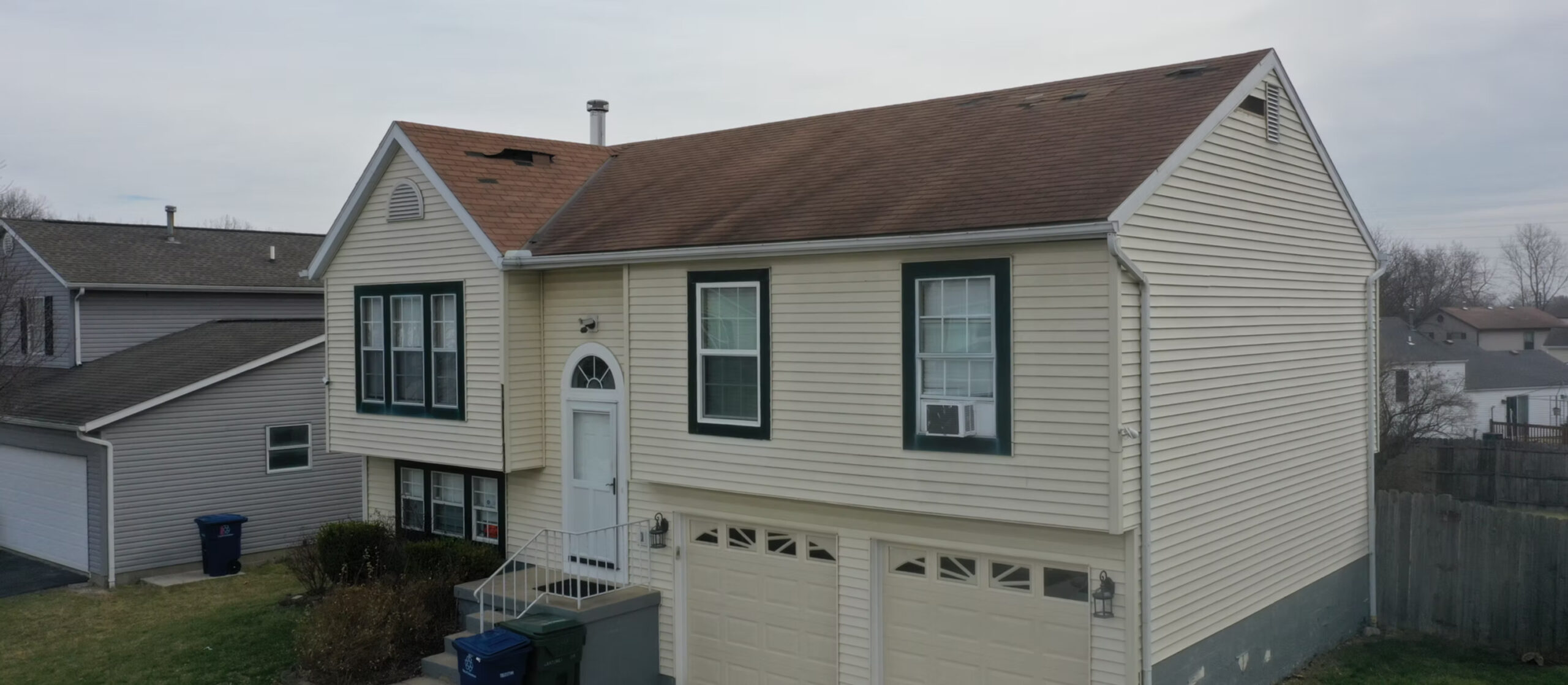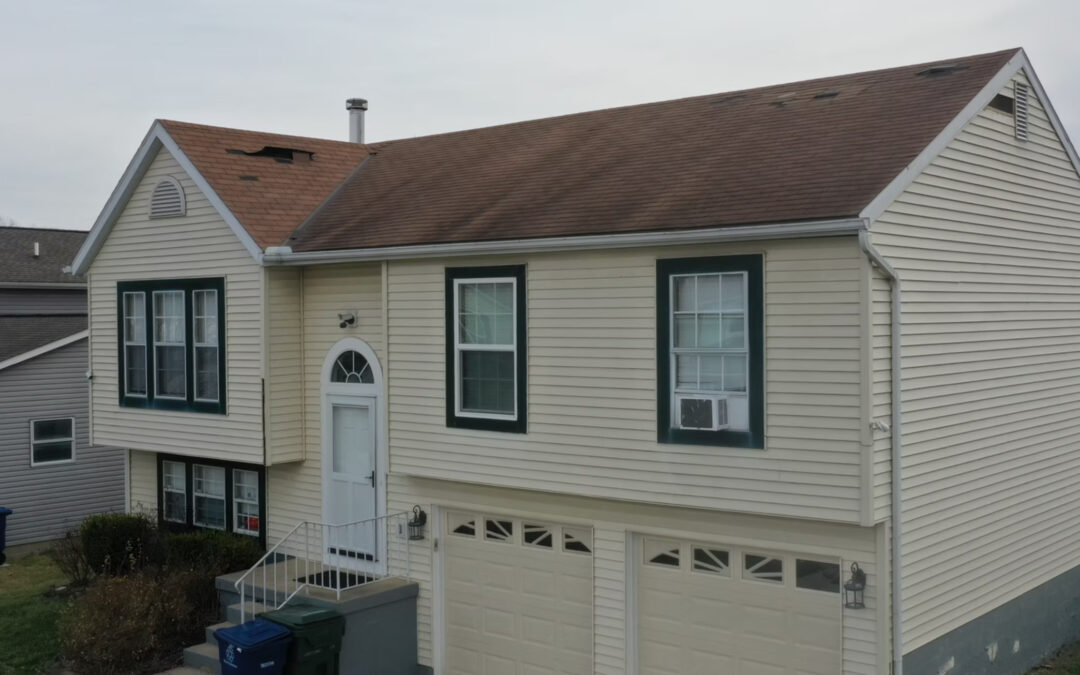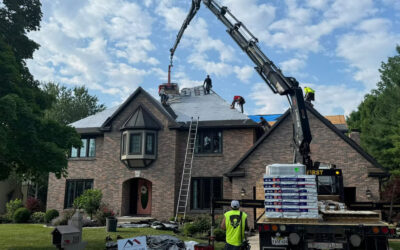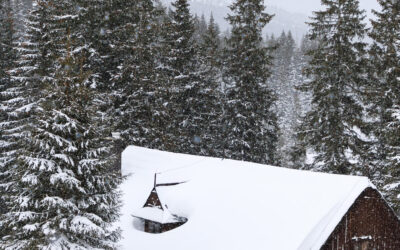
Storms can be a force of nature, unleashing powerful winds, heavy rain, hail, and sometimes even debris. Your home’s first line of defense against these elements is its roof. However, after a severe storm, your roof may have sustained damage that could go unnoticed and lead to more significant issues down the road. We’ll explore common types of storm damage on roofs and provide essential tips to help you detect and address it promptly.
At Snyder’s we perform free, no-obligation home exterior inspections. If you are experience leaking or other issues from storm damage, we offer free tarping services.
During your inspection, we will come out and check for the following:
1. Inspect for Missing or Damaged Shingles
We will visually inspect your roof for missing, cracked, or curling shingles. These signs may indicate wind damage or hail impact. Damaged shingles can compromise your roof’s ability to repel water, leading to leaks and water infiltration.
2. Check for Granule Loss
We’ll examine the gutters and downspouts for excessive granules, which may appear as small, coarse particles washed away from the shingles. Granule loss is a common consequence of hail damage, and it can accelerate the aging of your roof.
3. Look for Dents and Pockmarks
Hailstorms can leave behind dents and pockmarks on metal roofing, flashing, or vents. We’ll carefully inspect these components after a storm to assess the extent of any damage.
4. Check Flashing and Seals
High winds can dislodge or loosen flashing around chimneys, skylights, and vents. Additionally, inspect the seals around these areas for signs of cracks or gaps. Faulty flashing and seals can lead to water leaks and potential water damage.
5. Assess for Water Leaks
Inside your home, be vigilant about detecting water leaks on walls, ceilings, or around windows. Water stains or damp spots might indicate roof damage, and you should address it promptly to prevent further deterioration.
6. Inspect Attic Space
After a storm, it’s essential to venture into your attic to look for any signs of leaks or daylight shining through the roof. Also, check for water stains or wet insulation. A well-lit attic during daytime will make it easier to spot any issues.
7. Document the Damage
If any storm-related damage is found, we document it with photographs. These visual records can be valuable when filing an insurance claim.
Storm damage on roofs is a serious matter that requires prompt attention to avoid costly repairs and potential safety hazards. By performing a thorough inspection and looking for signs of missing shingles, granule loss, dents, and water leaks, you can detect storm damage early on. Taking proactive steps to address storm damage will help ensure your roof remains strong and reliable, protecting your home and your loved ones for years to come.




